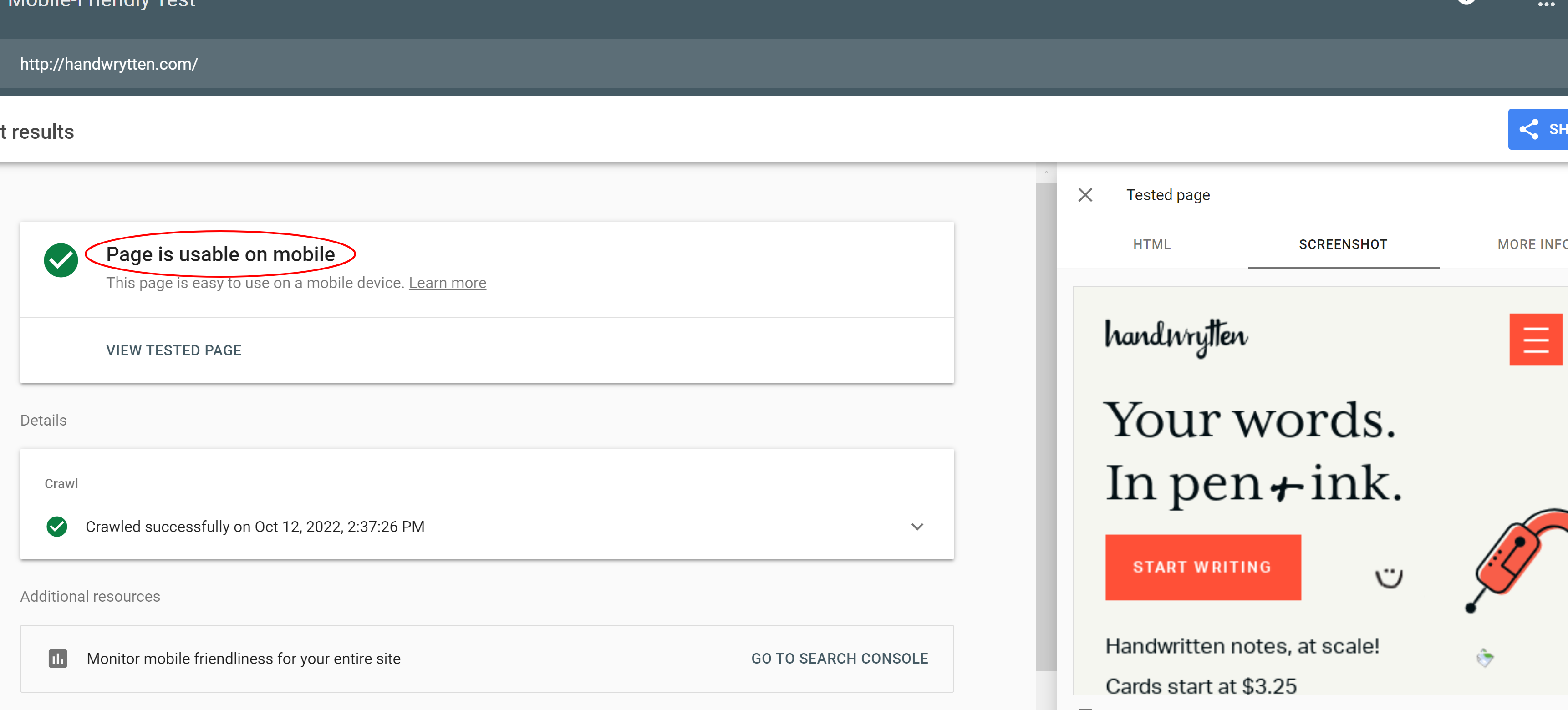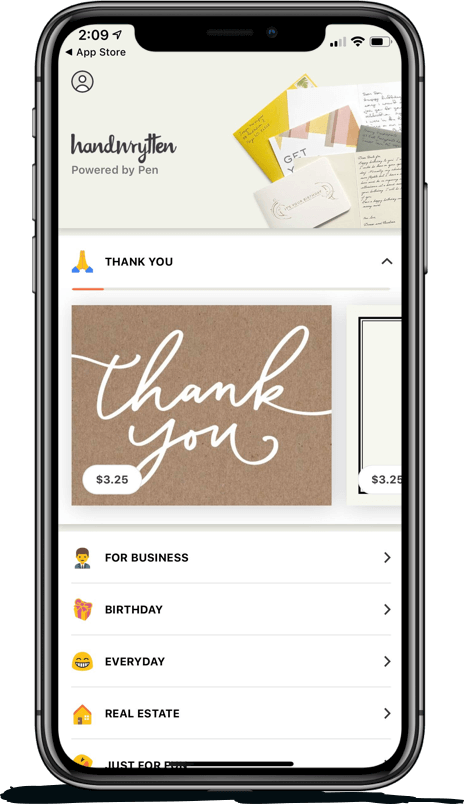
9280 S. Kyrene Rd.
Suite 134
Tempe, AZ 85284
Phone: +1 (888) 284-5197
Email: contact@handwrytten.com



You have been subscribed. Thank you!
Marketing has existed for centuries, dating back to antiquity in ancient Greece. At this time, things like branding and packaging were being used to advocate more for one product over another.
But in the 21st century, marketing has evolved into an entirely different animal; there are dozens of platforms to help track emails, and cold calls, promote brands, and even tools that can automate it all, for example Zapier Handwritten Notes. Along with these brand-new marketing materials comes the importance of real estate marketing.
Marketing in real estate is not all that different from marketing in general. Real estate marketing is the strategy real estate agents use to promote their brand, garner new customers, and generate more overall revenue. In layman’s terms, it is the method by which realtors convince buyers to buy their product.
A key thing to note about real estate marketing is that no matter the size of your brand, connecting with the world virtually is extremely critical. In 2021, over 97% of buyers used the web to search for a home, with 51% of all buyers purchasing a home they discovered online.
To put those numbers into context, for 97 out of every 100 people, the Internet will be used to research potential homes. About half of those people will purchase a home using that information.
The ability to collectively inform, convince, and influence buyers by developing solid digital real estate marketing ideas is extremely underrated in the modern day. That being said, where do we begin?
A real estate marketing plan is a plan created by a real estate agent to achieve his or her marketing goals in the real estate industry. Creating a plan is relatively easy, but integrating a well-thought-out plan into the structure of real estate businesses is another ordeal.
To begin developing your real estate marketing plan, think about your current consumer base.
Placing yourself in your average buyer’s shoes will allow you to see what your current branding caters to. If your perception of your brand is misaligned with who decides to purchase a home from you, this is something of note.
Think: If you expect young, driven entrepreneurs to be doing business with you, but have the largest consumer base being elderly widows, this should shift your understanding of where your real estate business is at.
From there, pick who you want your target market to be; do you want to continue to develop and iterate on your current customer base, or do you want to shift to a broader niche?
There is no wrong answer here; in reality, finding a group of buyers who resonate with where you want to place your company in the housing market is key. You will be able to relate to them more, offering them better houses and add-ons that line up with what they want.
For the vast majority of customers, the first place they will get an inkling of what you can offer them is your website. This seems obvious, especially because the amount of search traffic from mobile devices has doubled in the past 9 years. However, making sure that your real estate website is mobile-friendly and optimized for search engines is extremely imperative.
If the loading time is slow, the copy boring and tedious to read, and the property listings difficult to click, people will get scared off. Ensure that you take a thorough look at your website from the top down. This will ensure that every page operates exactly how you want it to and offers more than enough information for what the prospective clients may want.

Referral marketing efforts are efforts that will likely never get old for real estate agents. It is difficult to quantify the importance of satisfied customers. Imagine this scenario:
You meet with Haley and Jake, newlyweds, on October 5th. They mention that they originally saw a listing on the 2nd and scheduled a tour immediately. They talk about how the web interface was intuitive to work with, scheduling was simple, and how the included video tour of the home sold them on scheduling an in-person tour immediately, even though they were extremely busy.
As a real estate agent, this should be a massive green flag.
Assuming Haley and Jake decide to purchase a home from you, they are the ideal clients to help you generate more qualified leads. This is because they had a fantastic purchase experience while working with you and emphasized how they felt throughout the entire process.
Since you know how happy they were, simply asking them to refer you to their family and friends who are in the market would be a superb way of generating more leads. You can also send them a thank you note or congratulations on their new home to reiterate to them that they are a valued customer.
Providing value comes hand-in-hand with having both a professional website and a fantastic customer experience.
When the needs of the customer are placed before concerns about revenue or profit generation, the customer is more likely to feel like they are in the right place. If the entire home buying process feels this way – fluid, easy, helpful – they are more than likely to stick with a real estate agent that they know will give them a quality experience.
Beyond having the proper mentality and framework in place, there are a few different marketing strategies you should consider using to boost your real estate sales.
As time marches forward, more and more potential buyers will lean into technology. This means that now is the right time to focus on developing wide-reaching, value-providing social media accounts. The statistics on real estate demographics can help us to understand which platforms are optimal for online marketing.
The Zillow Consumer Housing Trends Report (2021) breaks down the share of buyers by multiple facets. For our purposes, the share of buyers by age allows us to see that about 50% of home buyers are between the ages of 30 and 50.
Statista’s breakdown of Facebook user demographics helps us to see a similar number reflected; roughly 50% of Facebook users are also within this age range.
Many real estate agents consider 30 to 50-year-old consumers the ideal market: they want to settle down, have mid to high incomes, and know what they want. The Facebook Marketplace for Real Estate is the best place to start.
One thing that Google has become huge on recently is creating high-quality content that will benefit the consumer. Even though you simply want to reach out to your target audience, it will benefit your real estate business, in the long run, to put out relevant content that will help potential clients.
Think about it this way: would you rather have John with no profile picture and no posts reach out to you, or have a branded realtor profile that posts actively reach out? We both know the answer.
Making a Facebook group, or even just a Facebook business profile, and subsequently writing about real estate relevant information will help people to see that you care about them.
Surprisingly enough, Pinterest is the second-best social media platform to connect with customers through. According to Sprout Social, 43% of Pinterest users plan on getting their ideal home within the next five years. Even further than that, the average ‘pin’ on Pinterest has a much longer lifespan than posts on other platforms.
The lifespan of a post, or the time within which you can expect to get engagement, varies significantly between social media platforms; Instagram posts last for about 48 hours, while TikTok posts only last a few minutes.
But pins and YouTube content? Both of these can last upwards of six months, meaning six months from now, your content may be getting viewed.
This means that creating evergreen content, content that provides non-time-related information, is your best bet here.
If you can create a Pinterest post that is well-branded with strong visuals and hashtag usage, or a YouTube video with similar attributes, you can be drawing traffic to your website for months. This is more of a long-term investment, but it can be worth the effort for real estate professionals.
Largely, the age groups which use these platforms do not align with those who plan on buying a home.
Only about 20-25% of Instagram users fall within the ideal age range of 30 to 50, and just 30% of TikTok users are the same. This means that significantly smaller groups of people who could even potentially want a home use TikTok or Instagram, let alone be presently interested in purchasing one.
Reaching out to potential clients via email marketing is a solid way to get more people to see your brand online. By collecting email signups on your website, you can send out info letters with the latest listings, tips, and other useful content.
Doing email marketing for real estate properly will take some time investment. Understanding the different communities to which you are advertising and catering to their needs are two different things.
This will likely require you to be creating specific content relevant to the community, effectively splitting your newsletter into multiple sub-groups that need individual attention.
Regardless, the more you cater to the client, the more leads you will get, so create an email marketing campaign as soon as possible.
As we already mentioned above, creating evergreen content on YouTube is a real estate marketing idea that could help create a more engaging social media presence. Clients appreciate the ease of watching a video to ‘tour’ a listing they may be interested in. In general, though, there are three kinds of real estate marketing videos you can make.
Promotional videos help you to talk about your brand and how you want it to be characterized. You can also discuss your methodologies for picking potential homes, ways by which you assist buyers or even ways to help sellers. Overall, the objective here is to communicate who your brand is as a whole; this is a smart way to stand out from other local businesses.
Getting the help of a video creation expert here would help a lot. While it may sound easy to make a high-quality customer testimonial video, there are a plethora of factors to consider. Lighting, camera angle, and who you invite to give their testimonial are all keys.
But, when done right, a well-produced customer testimonial video can pay dividends for you; you can put it on the front page of your website to emphasize your quality as a realtor as well as use it to lock in leads who are not quite sold yet.
These can be done on the platform of your choice – YouTube or Instagram will be the most likely candidates – and are quite self-explanatory.
Begin your video by shooting a quick introduction of yourself and the property, cutting to a tour of the property; interestingly enough, this has nearly a four-fold increase in inquiries for listings compared to listings without videos.
Your live tours can be mentioned on your social media platforms as well as in your email newsletter. This will connect all of your different digital marketing methods to work in unison.
There is also potential to create quick videos on YouTube or Instagram to do the same thing, but not live. Production quality is paramount here; drone shots are becoming increasingly popular.
By creating high-quality videos, you eliminate the need for people to directly reach out to you to ‘tour’ a property. This lowered barrier to entry will increase the likelihood that viewers will become potential clients; all without you actively having to reach out.
Beyond creating a mobile-friendly website and quality content, there are a few tools from Google that make it extremely easy to track and quantify how your real estate marketing strategy is performing.
Google Ads is key in any and every marketing industry. Sometimes referred to as PPC, or pay-per-click, advertising on Google requires you to ‘bid’ on specific keywords that you select. If your ad and brand are high quality enough, your ad will appear for the keyword you bid on when someone searches for it.
Succeeding with Google Ads will take some work. Things like managing your brand, your negative keyword list, and your keyword match type are all very helpful.
To be honest, detailing the best practices for managing your Google Ads account is a bit out of the scope of this article. However, as we create more useful content for you, we will update this article to refer to it.
Until then, there are ample resources available across the web to help you set up an account.
Google Analytics is a free-to-use website that allows you to track your website visitors and gain performance insights. By setting up a Google account and linking it to your website, you can track various metrics and build custom reports to provide you insights into who your average consumer is.
GA also integrates with many websites and tools like Mailchimp and Zillow to feed your more descriptive information. For instance, if you wanted to know how much traffic was coming to your website from Zillow, Google Analytics makes it easy to see.
It also can get far more granular than that: it will show you how many people visit an individual page on your website, what steps they took before deciding to contact you, and even compile demographic data into useful pie charts.
Frankly, for those who have real estate websites, you are missing out on a huge opportunity to easily track in-depth information on their visitors if you choose not to use Google Analytics.
Print ads have always been the primary way through which realtors have advertised available homes to potential buyers.
These can appear in the form of flyers describing an individual home or in a newspaper with multiple listings appearing at once. Over time, these ads have significantly fallen off the boat of success and are leaning more towards being a liability due to online marketing’s surge in popularity.
According to the National Association of Realtors, in 2021, 51% of buyers found the home they ended up purchasing on the Internet. And those who found their home through a print ad? 1%.
What does this mean? Well, mathematically speaking, if you invest just 2% of the effort into web advertising as you do into print, you will likely get a better return on your investment.
This should scream to you: print advertising is dead! But this isn’t a huge issue, considering nearly all buyers, at 95%, used online tools in their search process. Hence, investing more resources into developing a better website should be your priority.
That being said, there will be real estate agents that find success in investing in print advertising. But based on reality, for most real estate professionals, investing in direct mail for real estate should be one of the last ways you try to maximize lead generation; the vast majority of your leads will likely come through other methods, although there is debate on if direct mail works.
Handwritten real estate notes is, as we’ve reiterated, often not worth the cost. But, if you have the capital to spend and have already looked into optimizing your website and Google Ad spend, spending money on handwritten postcards could work out for you.
While it may not necessarily encourage buyers to immediately purchase a home, they are a fantastic way to say to former clients that you appreciate them. This can lead to an increase in referrals, better lead generation, and more loyal clients.
We’ve taken a look at quite a few different ways to enhance your real estate business as a real estate agent focused on marketing strategies and trends. Here is an extremely basic breakdown of these different ideas so that you can always remember our advice:
If you’ve made it this far, thank you for taking the time to read our article. We have an intense focus on providing a fantastic customer experience and sharing the knowledge that we have to help other professionals become better, so we’ve developed a few different tools to help make that easy.
Using Handwrytten’s powerful prospecting tool, agents can search an area (a zip code, a city, or even draw a polygon on a map) and filter by property, owner income, time in home and more. Real estate professionals can then send everyone who matches the criteria a handwritten card. This is great if the agent sells a home in the area and wants to reach out to other homes in the area.
Agents can also send follow up notes to all buyers or sellers after the transaction, thanking their new client. Along with these notes, product inserts or gift cards can automatically be included to increase mail open rate and client retention.
Agents can even stay in contact and top of clients’ minds by sending personalized, pen-written birthday wishes and even ‘happy holidays’ cards. This will leave a statement that very few marketers can.
For resources specific to real estate agents, visit our handwritten real estate notes page to garner an understanding of what we can holistically provide for you through our services, or check out some of our real estate marketing tips to get you started for free.
Check out our services or other pieces of content like writing a great closing for your card to help lock in more leads.
Real estate marketing is the process of marketing property for sale or selling to potential clients. A real estate marketer is the person who facilitates this marketing strategy. They do not necessarily need to be a realtor, but they generally develop a plan to reach out to prospective clients, gain new leads, and retain previous ones.
Although it seems like a recession is heading our way, the Federal Reserve Bank of Dallas argues that the housing market is unlikely to crash. They mentioned that “household balance sheets appear in better shape, and excessive borrowing doesn’t appear to be fueling the housing market boom”, implying that people should be more prepared to handle a housing market crisis if one did occur.
The easiest ways to start marketing as a real estate agent involve creating a website and setting up Google Analytics and Google Ads. You can also develop ways to interact with your customers, whether it is through Pinterest and Facebook, or YouTube Live.


Scale your handwritten outreach, creating positive impressions and long lasting bond.
Sign Up Today!


Over 100 designs to choose from or design your own. Our online card customizer makes it simple.
Check Out Our Cards!





